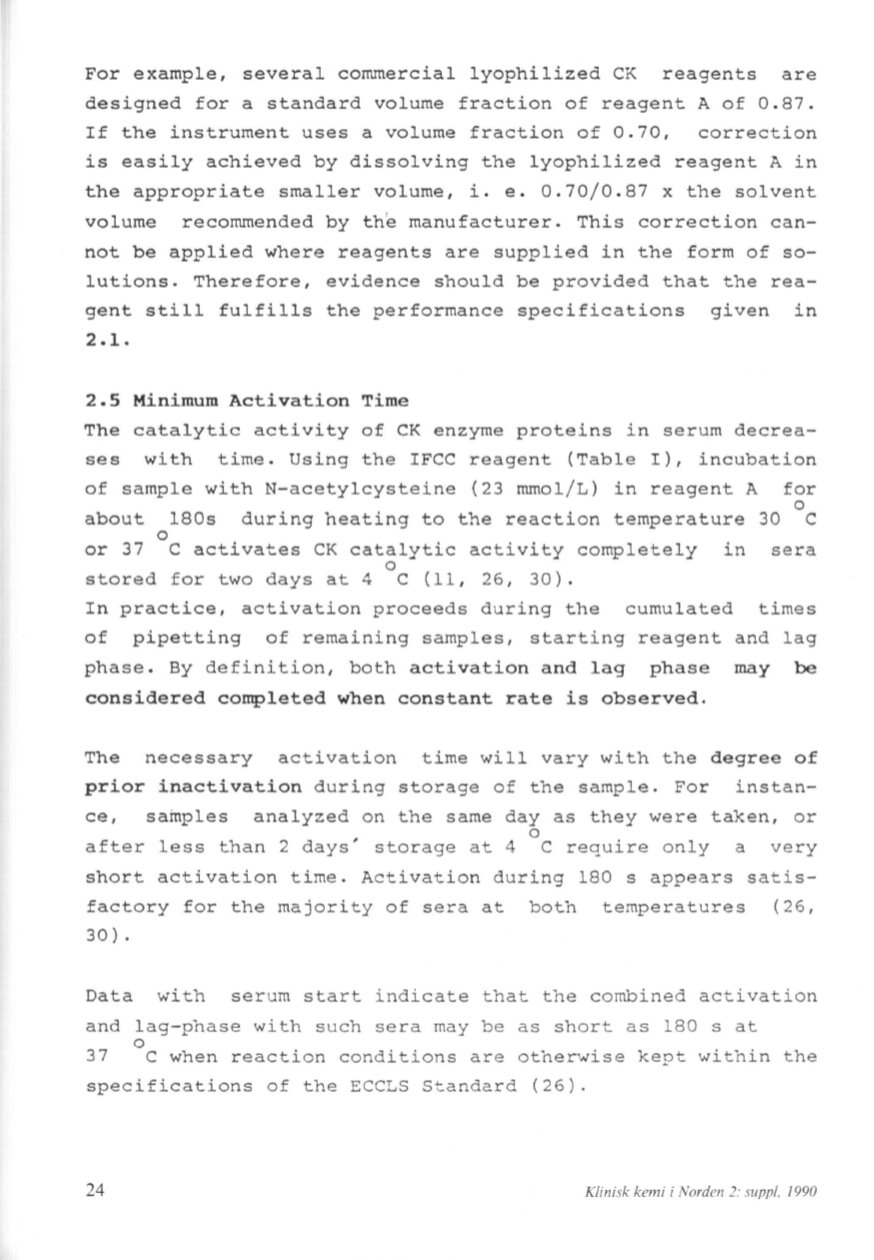
For example, several commercial lyophilized CK
reagents are
designed for a standard volume fraction of reagent A of 0.87.
If the instrument uses a volume fraction of 0.70, correction
is easily achieved by dissolving the lyophilized reagent A in
the appropriate smaller volume, i. e. 0.70/0.87 x the solvent
volume recommended by the manufacturer. This correction can–
not be applied where reagents are supplied in the form of so–
lutions. Therefore, evidence should be provided that the rea–
gent still fulfills the performance specifications given in
2.1.
2.5
Minimum Activation Time
The catalytic activity of CK enzyme proteins in serum decrea–
ses with time. Using the IFCC reagent (Table I), incubation
of sample with N-acetylcysteine (23 mmol/L) in reagent A for
o
about 180s during heating to the reaction temperature 30 C
o
or 37 C activates CK catalytic activity completely in sera
o
stored for two days at 4 C (11, 26, 30).
In practice, activation proceeds during the cumulated times
of pipetting of remaining samples, starting reagent and lag
phase. By definition, both activation and lag phase may
be
considered completed when eonstant rate is observed.
The necessary activation time will vary with the degree of
prior inactivation during storage of the sample. For instan–
ce, samples analyzed on the same day as they were taken, or
o
after less than 2 days' storage at 4 C require only a very
short activation time. Activation during 180 s appears satis–
factory for the majority of sera at both temperatures (26,
30) .
Data with ser um start indicate that the combined activation
and lag-phase with s uch sera may be as short as 180 s at
o
37
C when reaction conditions are othe rwise kept within the
specifications of the ECCLS standard (26).
24
Klinisk kemi i Norden 2: suppl. /990


